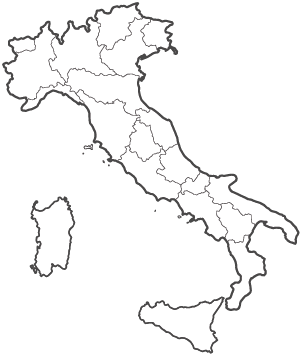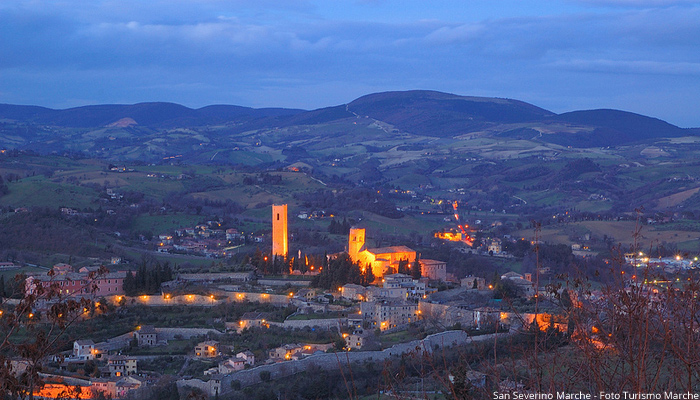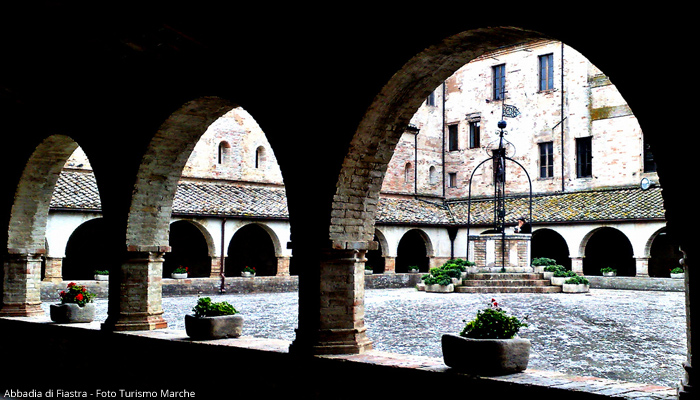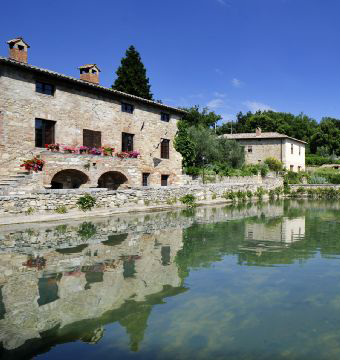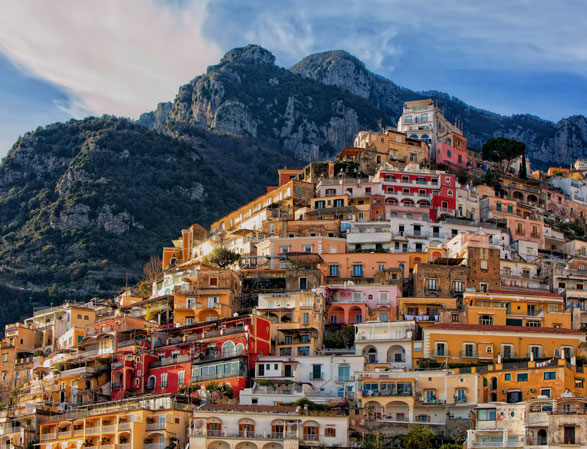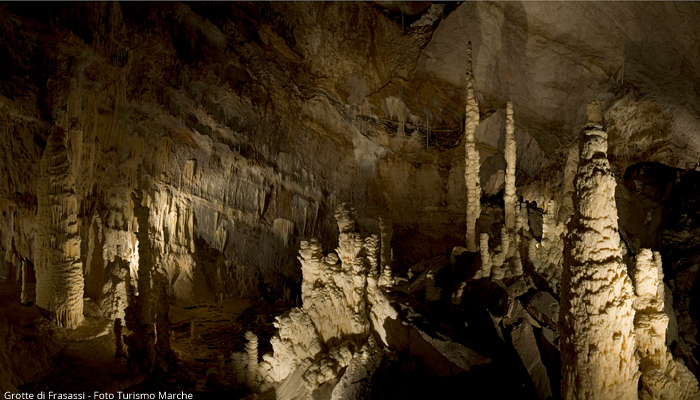
The journey in brief
After a day spent exploring the verdant countryside, Gorge of Rossa and Frasassi caves, take a well-deserved break at the San Vittore Spa Center. Continue on to the hamlets of Cingoli and San Severino delle Marche, the Abbadia di Fiastra nature reserve and Leopardi’s Recanati.
It's perfect for...
An ideal itinerary for travelers seeking unique outdoor excursions, this tour of the Marche region includes a visit to Italy’s most dramatic caves and grottoes, plus hamlets with jaw-dropping views.
Day 1 – The Frasassi caves and the park
The first day begins in Genga, a town in Gola della Rossa and Frasassi Regional Nature Park. This protected area is considered the green heart of the Marche region, a pre-Apennine environment rich in woodland and beautiful scenery. Over time, erosion caused by water running between the karst rocks has created caves, gorges and underground chambers, the natural habitat of several species of rare plants and animals.
The Frasassi caves are the park’s most famous attraction. Just past the entrance, you’ll drive through an incredible gorge of towering vertical walls on either side of the road. The ticket office and parking area is located just a bit further into the valley. The caves are accessible only on foot and the average temperature is 14°C, so a sweatshirt is recommended even during summer as well as comfortable shoes.
The cave tour is suitable for all ages and abilities, and lasts a little over an hour. It starts from Abisso Ancona, the first abyss discovered in 1971, striking both for its formations and impressive size. You will then walk through a network of passages and caverns with curious names like 200 Hall, Grand Canyon, Ursa’s Hall and the Neverending Hall. The underground chambers are filled with peculiar-shaped stalactites and stalagmites, some which also have their own nicknames (look out for Witch Castle, Obelisk, Niagara Falls, the Giants and the Organ Pipes!).
For those who love caving, there are two routes to explore. The blue path and red path start where the tour ends and offer varying levels of difficulty through the tunnels and narrow passageways.
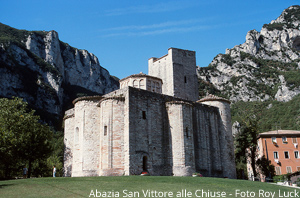
A short distance from the caves is the San Vittore Spa Center. Its sulphur springs are reputed to help people suffering from respiratory conditions as well as rheumatism. If you’re looking for a restorative experience, this is a great place to stop!
Near the spa complex is the San Vittore delle Chiuse Abbey. A Benedictine monastery from the Romanesque era, its impressive travertine design features Byzantine influences. Next to the convent is the Speleo-paleontological and Archaeological Museum. Admission to the museum is included in the Frasassi caves’ ticket price, and inside you can see a range of interesting fossil exhibits, including Genga’s own ichthyosaur.
